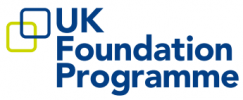Forged in Steel: Lessons from Port Talbot’s community
For me, the trenches of medical school revision were softened by an image I held in my mind: working in London in Obstetrics and Gynaecology, surrounded by friends—most of whom had already joined the post-university exodus from Bristol to London. That image became an anchor, something to look forward to. So when I opened my UKFPO allocation and saw the word “Wales,” I think the best description of my emotion was disbelief. That feeling only deepened when I discovered my rank was 9826 and that my first F1 job would be in drug and alcohol services in Port Talbot.
Determined to help me find a silver lining, my mum took me on a tour of Swansea Bay. But the view of Port Talbot from the M4—tall smokestacks, steel towers, and sea mist—felt stark and unfamiliar. I had recently watched The Way, a BBC drama imagining Wales descending into civil unrest after a strike at the local steelworks. At the time, it felt like just a story—distant and unreal. I was unaware of the reality in this; that the steelworks were likely to be closed imminently and thousands of jobs lost.
Even before the closure, it became clear how deeply the steelworks were woven into the town’s fabric. Visually, the towering chimneys loomed over tight rows of terraced houses, as though industry and home life had always been inseparable. Posters about the steelworks’ closure covered bus stops and shop windows. On the radio, I listened to countless BBC Wales interviews with local people describing the void the shutdown would leave—not just in jobs, but in identity. Oddly, the closure itself was quiet, almost anti-climactic, and yet its emotional aftershock was everywhere.
Adding to the town’s challenges, I quickly learned that Swansea Bay Health Board had the highest rates of drug deaths in Wales, particularly in Neath which was an area I covered. Bristol certainly isn’t immune to substance misuse, but in medical school, I’d had very little direct exposure. In my first week, the supervising consultant simply handed me three textbooks and told me to take them to the beach to read—and I learned a lot.
I won’t pretend it was easy at first. Having lost a friend to suicide during medical school, I was genuinely afraid to discuss mental health with patients. Addiction is one of the cruellest diseases: it forces you to put everything—your health, your family, your safety—beneath the substance. These individuals are some of the most vulnerable in society. Not once during my four-month placement did I ask a patient about their childhood and hear words like “okay,” “safe,” or “fine.” Their daily lives—basic ADLs—were at times unimaginable.
This was emotionally draining but also deeply rewarding. Many of these patients were so isolated that simply being present, showing interest, felt meaningful. I had been worried about connecting with a patient demographic so far from my own lived experience. Yet that became one of the aspects I loved most about the job. The team was kind, patient, and generous with their time. They took me into community settings, where I met both current and former users, learning how addiction touches every corner of a person’s life—and how recovery is never linear.
In reality, my first job became something of a privilege. The chance to listen, to understand lives often overlooked, taught me more than any empathy simulation in medical school. It showed me the complexity behind addiction, the small victories in moments of connection, and the importance of true empathy in medicine.
The Port Talbot Steelworks closed on the 30th of September 2025. It was my second week of running my own community clinics and definitely was a good conversation starter. The patient group I was exposed to had high rates of unemployment so I met very few people directly affected. But the secondary impact was impossible to ignore—ripple effects on families, local services stretched thin, and a community grappling with loss and uncertainty. The closure exacerbated the challenges many patients already faced, making addiction and mental health struggles even more acute against a backdrop of economic uncertainty.
Outside of work, I found unexpected solace by the coast. Early on, I would go sea swimming along the rugged Swansea shore—the cold water was bracing, but it cleared my mind and gave me a sense of calm after emotionally heavy days. As the weather turned colder, the swims became long walks along the beach instead, watching the shifting tides and sea mist. I found connection with other doctors who had also moved to the area—F1s and junior colleagues navigating the same new environment. Sharing these moments helped me feel less isolated and more part of a community. At work, the hardest moments were balanced by incredible breakthroughs. Watching patients reach milestones—a month sober, then two—was deeply inspiring. These small victories didn’t erase the struggles, but they were proof that change is possible, even when the odds feel stacked against you. Being part of that journey, offering support and encouragement, gave me a sense of purpose I hadn’t anticipated. It was a privilege to witness resilience first hand, and it reminded me why I chose this job in the first place.
Molly Van Der Heiden
F2, Wales Foundation School
All previous HOFP articles can be found on on our HOFP webpage
